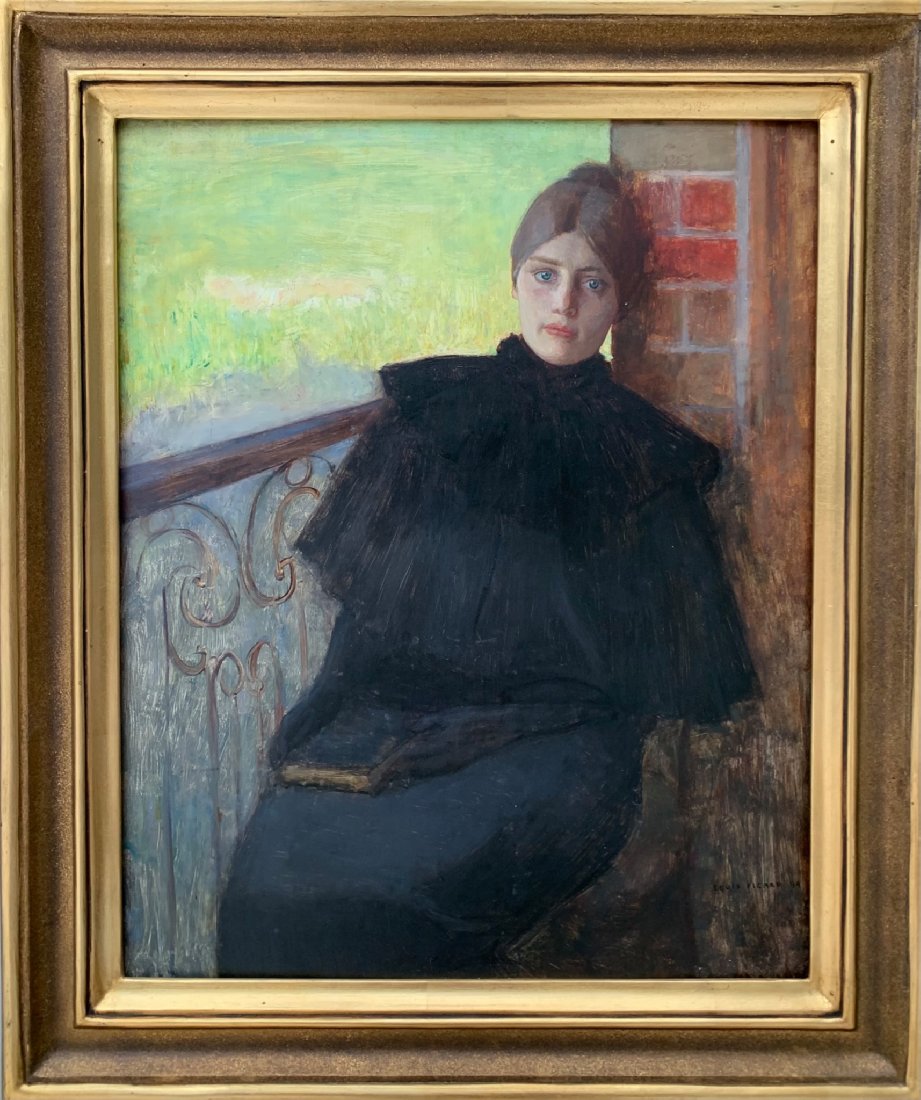Description:
Louis Picard (1861-1940) trained with his brother, who was also a painter, in Gérôme’s studio in Paris. For years he exhibited his works at Paris exhibitions and Salons. In 1900 at the Exposition Universelle in Paris he received a silver medal and the title of Knight of the Legion of Honor. He mainly painted portraits of women in a mysterious atmosphere and harmonious colors.
Description of the painting:
On the canvas, the artist portrays the portrait of a young woman. The model is shown frontally, in a shot to the knees. She sits by the railing, leaning against the corner of a brick wall. All parts of the woman’s outfit are black – a long dress, a cloak and gloves. This is like a pedestal on top of which is an ideally oval head. The woman’s features seem to be very symmetrical. This emphasizes the part in the middle of the brown, coiffed hair in a high bun. The woman’s features are distinct. The viewer’s eyes are drawn to the blue eyes of the model. They seem to be accurately portrayed against a loosely created background and an almost uniform black outfit. The woman’s gaze is directed forward, maybe at the portrait painter, one can also get the impression that she is making contact with the recipient. The space surrounding the woman lacks contours. It consists of a railing placed on the left side of the image field, with an emphasized decoration, behind it an undefined space of green stretches. The vertical brushstrokes on its closer edge suggest that it is a lawn. The right side is occupied by the wall of the building, whose brick texture is highlighted only by the woman’s head.
It seems as if the main theme of the work was the head of the model. Unlike the background and outfit, it is shown in an overly detailed way. In the woman’s hands is a book, which may be the one she is reading or the diary she is writing. The subtitle of the work – Worries, drawn on the woman’s face, may be caused by mourning, which is suggested by the black outfit. The background painted with thick brushstrokes creates an impression of the mystery of the presentation, which is emphasized by the black garb. The model visible in the painting was often portrayed by the artist.


